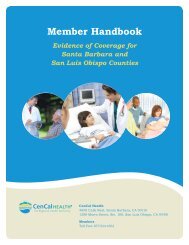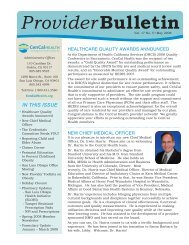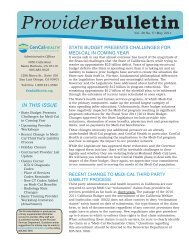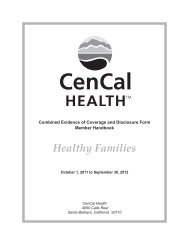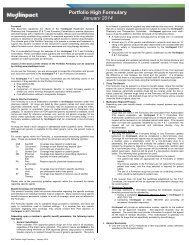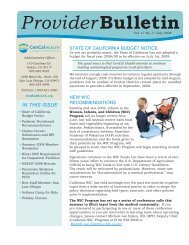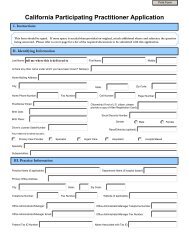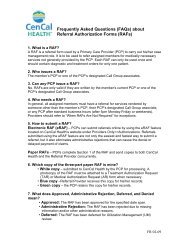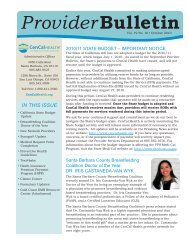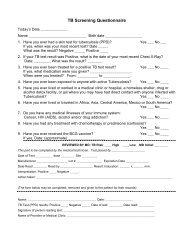Addressing Language Access Issues in Your Practice: A Toolkit for ...
Addressing Language Access Issues in Your Practice: A Toolkit for ...
Addressing Language Access Issues in Your Practice: A Toolkit for ...
Create successful ePaper yourself
Turn your PDF publications into a flip-book with our unique Google optimized e-Paper software.
39 CALIFORNIA ACADEMY OF FAMILY PHYSICIANS<br />
References<br />
1. All data <strong>in</strong> this paragraph are from the U.S. Census Bureau.<br />
2. For more <strong>in</strong><strong>for</strong>mation on language proficiency and population <strong>in</strong> the United States, see The Grow<strong>in</strong>g Need <strong>for</strong><br />
<strong>Language</strong> Services, <strong>in</strong> A <strong>Language</strong> Services Action Kit, http://www.healthlaw.org/pubs/2003.lepactionkit.html.<br />
3. CAFP’s <strong>Language</strong> <strong>Access</strong> Survey, February 2003, 297 Family Physicians and Primary Care Physicians.<br />
4. Wirthl<strong>in</strong> Worldwide 2002 RWJF Survey.<br />
5. A few such programs <strong>in</strong>clude the Medical Schools at Harvard University, UMDNJ Robert Wood Johnson Medical<br />
School, UCLA, Northwestern, University of Nebraska, University of Rochester, and University of Wash<strong>in</strong>gton.<br />
6. The Commonwealth Fund 2001 Health Care Quality Survey.<br />
7. Ghandi TK, Franks P, Doescher MP, Saver BG. Disparities <strong>in</strong> health care by race, ethnicity and language among<br />
the <strong>in</strong>sured. Med Care 2002; 40: 52-9.<br />
8. Carrasquillo O. Patient comprehension of doctor-patient communication on discharge from the emergency<br />
department. J Emerg Med 1997; 15: 1-7.<br />
9. Manson, <strong>Language</strong> Concordance as a Determ<strong>in</strong>ant of Patient Compliance and Emergency Room Use <strong>in</strong> Patients<br />
with Asthma, Medical Care 1988.<br />
10. F<strong>in</strong>scella K, Burst<strong>in</strong> HR, Cook EF, et al. Drug complications <strong>in</strong> outpatients. JGIM; 15: 149-154.<br />
11. Crane JA. Orav EJ, Brennan TA, Burst<strong>in</strong> HR. Impact of language barriers on patient satisfaction <strong>in</strong> an emergency<br />
department. JGIM 1999; 14: 82-87.<br />
12. Wirthl<strong>in</strong> Worldwide 2002 RWJF Survey.<br />
13. Hampers LC, Cha S, Gutglass DJ, B<strong>in</strong>ns HJ, Krug SE. <strong>Language</strong> barriers and resource utilization <strong>in</strong> a pediatric<br />
emergency department. Peds 1999; 103(6): 1253-1256.<br />
14. Bernste<strong>in</strong>, J et al. Does the use of tra<strong>in</strong>ed medical <strong>in</strong>terpreters affect ED services, charges and follow-up? Acad<br />
Emer Med, 2000.<br />
15. Officeian News, January 2002, page 6.<br />
16. Harsham P. A mis<strong>in</strong>terpreted word worth $71 million. Med Econ 1984; June: 289-92.



